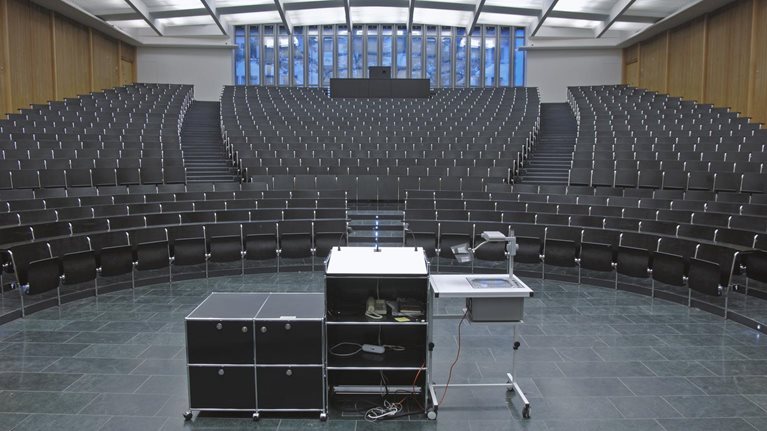For higher-education institutions, the first frantic rush of transitioning from in-person to remote learning is behind them—not that the process is complete. Most faculty members have managed to establish new routines. Others are still working out how to teach courses designed for a physical classroom through online platforms that they may still be learning to master.
Students are also having to adjust, expected to learn as much without the ready social connection and energy of a residential and in-person learning environment. It didn’t help that until the COVID-19 crisis, online learning comprised a relatively small share of higher education. Fewer than one in five (18 percent) of US tertiary-level students learned online exclusively; as of fall 2018, about a third had taken at least one course online.1
Now that the first phase has passed, what comes next? This article details five specific actions universities could take in the next few months to help improve student learning, engagement, and experience while operating remotely. Whether students are able to return to campus for the fall term or remain remote for longer, these moves may inspire institutions to pilot new initiatives, learn what works, iterate, and position themselves to create capabilities that will enhance instruction permanently.
Focus on access and equity. Moving from on-campus to remote learning raises issues related to access and equity. There are the immediate logistical challenges of ensuring students have the basic technology they need to learn remotely. One response has been for institutions to offer stipends for internet access and laptop rentals or purchases. Others have loaned equipment and procured additional laptops and hot spots for under-resourced students; this may get equipment to them faster and at an accessible cost. The University of Washington-Bothell, for example, has increased its equipment loan service and bought laptops and hot spots for students who need them.
Universities can be an effective central coordinating resource to share the free options becoming available. Hundreds of internet and telephone service providers have signed the FCC Keep Americans Connected Pledge and are providing benefits like free hot spots with no data caps to support distance learning. Universities can also work with state and local providers and agencies to advocate for government support.
In addition to these technical issues, there are a range of social, emotional, and human needs that need to be addressed to enable students to learn. Some are basic: food, housing, and money. Without access to dorms and on-campus food services, lower-income students can struggle just to get through the day. Universities can work to connect them to social service organizations; they can also think creatively about providing food service and residential support for those most in need. Some universities, such as Mississippi State, are also getting creative about keeping campuses partially open in a controlled, physically distant way.
Mental health services on campuses have been expanding, and the need for them could grow—for students, faculty, and staff alike—given the anxiety and distress caused by COVID-19. With fewer people on campus, institutions are starting or scaling up outreach, including video options for mental health professionals, partnerships with tele-health and tele-counseling providers, and access to online mindfulness classes and applications.
Those with learning disabilities or accessibility needs require particular attention. On many campuses, there are offices that help to ensure that learning is visually, aurally, and tactilely accessible. The shift to remote learning, however, could overwhelm these resources. The priority should be to design specific approaches to suit each need. For example, institutions can record courses and add closed captioning, so that students who are hearing impaired or have auditory processing delays can keep up.
Support faculty. Most professors are working hard to respond creatively to teach their students to the same standards, even as their own lives are disrupted. What methods work best in a remote environment will differ by discipline and the technology available. That said, there are a few broad ways that institutions can help.
- Offer more teaching support. Many institutions have centers that offer support to faculty in their teaching; these should be scaled up as much as possible and shift their orientation from “wait until asked” toward outreach, engagement, and sitting in to observe remote courses.
- Use social media and online forums so that faculty can share best practices. Collaboration forums can get early momentum when “seeded” with ideas from influential professors. Highlighting and explaining successful remote-teaching practices during faculty meetings can cultivate a sense of camaraderie, as well as a culture of sharing and improving. Faculty will inevitably start from different points in their comfort and skill with remote teaching, but institutions that cultivate a culture of improvement will benefit both their students and the faculty themselves.
- Set up a structure so that faculty can get regular feedback on their remote teaching. There are two sources to draw from—short student surveys and engagement data derived from the school’s learning-management system. Effective student surveys are short and ask specific, pertinent questions, such as how well professors explain the concepts or cultivate a sense of connection. These surveys should be used not to judge professors, but to give them information on how students are responding and where they can improve. Survey results can also give administrators a sense of where they might need to intervene to support student learning.
- Invest in capabilities over the summer. As institutions consider whether they will extend remote learning through the fall semester, they can spend the summer months training faculty and refining courses for an online format. Universities could consider holding remote-learning “bootcamps” and hiring more online curriculum designers. In addition, universities can use summer months to explore and test new technologies to meet specialized needs, such as simulation software to mimic a lab experience or accessibility options to better serve students with disabilities.
Move the quad online, too. For many full-time students, the value of higher education comes not only through academic coursework, but also from the vibrancy of campus life, from late-night conversations, to interactions in the dining hall, to serendipitous moments of engagement. As institutions move to remote learning, they can think about how to use existing tools to move in-person gatherings online and open up spaces for discussions, events, wellness classes, and other interests. The idea is to offer virtual spaces in lieu of physical ones to enable the university community to continue to connect.
One way to think about it is to ask how to create a single, central place—a kind of online student center—with live staff and consistent hours. The University of Florida has started a “student plaza,” where it is possible to organize study groups and connect with academic advisers. It is also possible to build virtual tutoring networks that allow tutors to connect with students. Universities could also consider creating “virtual homerooms” based on geography or affinity groups to enable continued student engagement.
To keep organizations going, university leaders could consult student leaders to agree on common goals and priorities and to discuss what needs to happen in terms of technology access, learning, and engagement. Consider how to create spaces for established and new student groups to continue to operate in some way. For example, universities could work with students and use university resources to offer a hub for volunteers looking to help with the crisis. Students across the nation created a virtual teach-in on climate change with 52 simultaneous university-hosted statewide webinars. In lieu of guest lecturers filling a hall, bring in speakers remotely, including live discussion. Indeed, one of the advantages of remote learning is the ability to invite guests from anywhere in the world. It will not be possible to put on a full theater production, but virtual play readings are certainly doable.
Activate stakeholders. Big or small, public or private, colleges and universities are alike in one way: they are rich in human talent. To succeed in this brave new virtual world, the key is to empower and redeploy this talent to address the most pressing needs.
One way to start is by identifying and activating tech-savvy students and staff to coach faculty and other students to use online tools. At Pennsylvania’s Muhlenberg College, eight digital learning assistants—students with expertise in digital technologies and practices—are holding remote drop-in hours for four hours a day. They are also supporting other members of the digital learning team, including designers and librarians, through the transition to remote learning. Another possibility is to ask alumni and community members to provide remote mentorship and coaching to support students with remote learning, career discussions, and virtual internships.
Invest in cybersecurity to ensure the continuity of teaching and learning. The rushed efforts to move learning online have increased the risks of cyberthreats. Universities have already endured cyberattacks in which unwelcome users have disrupted classes. Universities can prevent such problems by ensuring their cybersecurity teams are up to the task, closing the gaps that attackers can exploit, and making investments required to ensure security and data privacy while enabling teaching and learning to go on. Areas for stepped-up monitoring include remote-learning platforms and collaboration tools, monitoring networks for malware, and monitoring student and faculty endpoints to catch data-related incidents before they become serious problems.
Security and technology risk teams can take the following actions to support online learning.
- Secure the tools used for teaching and learning by implementing safe remote-learning protocols including scaling virtual private networks (VPNs) for data transmissions by students and faculty implementing multifactor authentication for learning applications, enforcing antivirus software, limiting access to learning applications to verified student and faculty members, and ensuring adequate cloud storage for recorded lectures. Example: Yale University’s IT department has created a coronavirus technology update service that highlights VPN and multifactor authentication protocols, as well as supporting online learning.
- Build a resilient faculty and student body through education about phishing and malware attacks, particularly those that are trying to take advantage of fears around COVID-19. Example: Kean University in New Jersey has created specific resources to inform its community about cybersecurity resources related to COVID-19.
- Adapt how the university works, teaches, and secures its learning capabilities by adding support capacity for the information-technology help desk, testing and clarifying incident-response protocols, and confirming the security of third-party tools used for learning and teaching.
Often with limited experience and training, US higher education institutions have hustled to shift to remote learning and teaching. Many have done so in an exemplary manner; others have not been as successful, at least so far. All of them, though, have more to do to achieve the excellence and collegiality that should define the university experience.
This forced and abrupt move to remote learning has not been easy. However, it can provide institutions with an opportunity to experiment and innovate. Piloting new approaches and building on practices that are proved to work can help create positive and enduring changes. Universities may find that they have a new remote-learning capability that can be integrated with on-campus instruction, to everyone’s benefit, when this crisis has passed.


